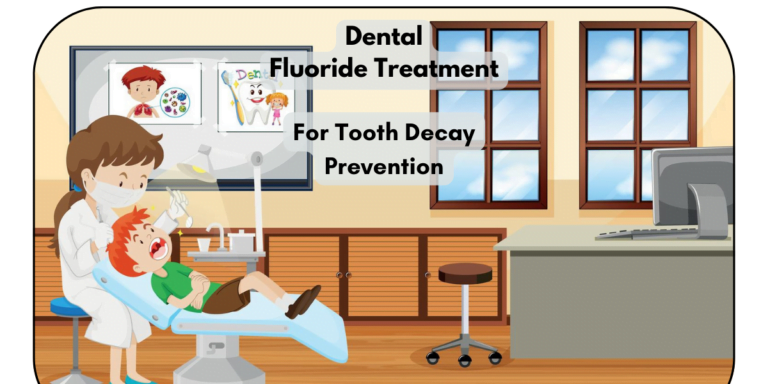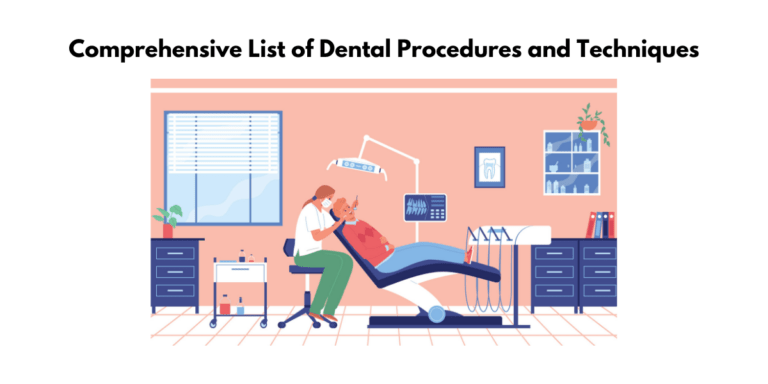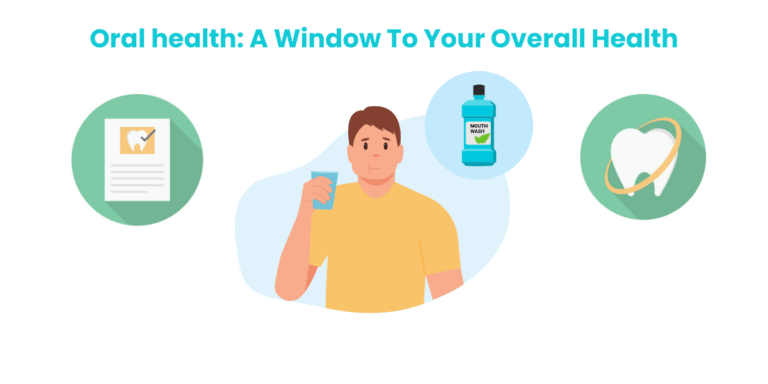Poor Teeth Enamel: Unveil Causes and Treatments for Loss of Enamel or Enamel Hypoplasia
Introduction to Enamel and Its Importance
What Is Tooth Enamel?
Tooth enamel is the outermost layer of a tooth, a translucent shell that acts as a hard protective coating for the crown—the part of the tooth visible outside of the gums. It’s not just a mere cover; enamel is the hardest tissue in the human body, surpassing even bone in strength. It’s composed mainly of hydroxyapatite, a highly organized structure of calcium phosphate crystals.
The Role of Enamel in Oral Health
Enamel plays a pivotal role in maintaining oral health. As the armor of your teeth, it defends against the daily rigors of eating and drinking. This tough exterior enables you to enjoy a variety of foods without damaging the sensitive inner parts of your teeth. Additionally, enamel acts as an insulator, safeguarding the nerves within your teeth from the extremes of hot and cold temperatures which, if exposed, could lead to painful sensations.
Moreover, the translucency of enamel affects the aesthetics of your smile. It allows the color of the dentin underneath—the second layer of the tooth—to shine through, influencing the overall shade of your teeth. Maintaining the integrity of enamel is not just about preventing physical damage; it’s also about preserving the brilliance of your smile.
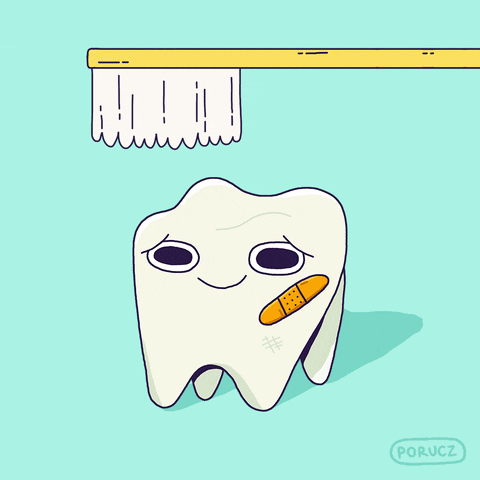
Unmasking the Culprits of Enamel Erosion
Dietary Choices Leading to Enamel Loss
When it comes to dietary choices, certain foods and drinks can contribute significantly to enamel loss. Consuming excessive amounts of sugary foods establishes an ideal breeding ground for bacteria in the mouth, leading to the production of acids that can erode tooth enamel. Acidic foods and beverages, such as those containing citric or other fruit acids, can directly assault enamel, causing demineralization and weakening its structure.
Frequent snacking on sweet treats or sipping on soda and sports drinks throughout the day continuously exposes enamel to acid, allowing little time for saliva to neutralize the pH and repair the damage. These habits expedite the erosion process, gradually thinning and weakening enamel over time.
As the American Dental Association reports, soft drinks, including sugar-free varieties, are among the top culprits for dental erosion due to their acidic nature. Similarly, fruit juices, despite their healthful reputation, can be harmful to enamel, particularly those with high citric acid content like lemon, lime, or grapefruit juice.
Additionally, alcohol consumption can have a dehydrating effect on the body, reducing saliva production. Saliva plays a crucial role in maintaining oral health by cleansing the teeth and buffering acids. Therefore, drinking excessive alcohol can indirectly contribute to enamel erosion.
Behaviors and Environmental Factors
Aside from diet, several behaviors and environmental factors can contribute to enamel loss, reinforcing the importance of lifestyle considerations for oral health.
Bruxism (Teeth Grinding): One of the most significant behavioral factors is bruxism, or teeth grinding, often triggered by stress or anxiety. This unconscious habit can occur during the day or night and leads to excessive wear and tear on the enamel, potentially causing cracks and chips over time.
Chewing on Hard Objects: A common habit, such as chewing on ice, pens, or hard candies can also put undue stress on enamel, leading to fractures and micro-cracks that weaken the tooth’s structure.
Acid Reflux: Gastroesophageal reflux disease (GERD) can cause stomach acids to flow back into the mouth, bathing the teeth in corrosive acid and leading to enamel erosion.
Dry Mouth: Saliva is important for neutralizing acids in the mouth; therefore, a condition like xerostomia, or dry mouth, can escalate the risk of enamel erosion. Dry mouth may result from medication side effects, certain diseases, or lifestyle choices such as smoking.
Environmental Enamel Erosion: Extrinsic factors include environmental elements like swimming in chlorinated pools, where the water’s acidic pH level can cause enamel erosion over time.
Professional Exposure: Additionally, those who work in environments with high levels of acid fumes, such as in battery factories or within the wine industry during the wine-tasting process, are at risk for occupational enamel wear.

Signs and Symptoms of Weakening Enamel
Common Indicators
The signs of weakening enamel can be both visible and felt, and recognizing them is key to preventing further dental issues. Here are some common indicators that your enamel may be eroding:
Discoloration: Enamel wear often leads to teeth taking on a yellowish hue because as the enamel thins, the darker dentin layer underneath becomes more visible.
Sensitivity: If hot, cold, sweet, or acidic foods and drinks cause discomfort, this could be a sign of enamel erosion exposing the sensitive dentin.
Cracks and Chips: Enamel that is weakening may lead to small cracks or chips in your teeth that are often felt with the tongue.
Smooth, Glossy Surface: Teeth may appear shiny and feel unusually smooth, indicating that enamel has been worn away, leaving the surface flat and shiny, particularly at the biting edges.
Indentations: Also known as “cupping,” indentations on the tooth surface are small dents or hollows that can appear where enamel has worn away.
Increased Tooth Decay: Weakening enamel is less resistant to bacteria, potentially leading to an higher risk of cavities and tooth decay.
Addressing these symptoms as soon as they’re noticed is crucial because enamel does not contain living cells and, therefore, cannot regenerate. Visiting a dentist when these indicators first appear can help implement protective strategies to prevent further damage.
Comparing Symptoms with Hypoplastic Teeth
Recognizing the difference between symptoms of enamel erosion and signs of hypoplastic teeth, also known as enamel hypoplasia, is essential for correct diagnosis and treatment. Enamel hypoplasia is a defect of the enamel that occurs during the development of the teeth, resulting in a reduction of the overall quantity of enamel. Here’s how the symptoms compare:
Symptoms of Enamel Erosion:
- Gradual loss of enamel leading to yellowness as dentin shows through.
- Increased sensitivity to temperature, sweets, and acids due to thinning enamel.
- Uniform wear and flattening of the chewing surfaces.
- Rounded or smooth surfaces and edges of teeth.
Signs of Hypoplastic Teeth:
- Localized white spots suggesting areas of underdeveloped enamel.
- Easily stained teeth, with colors more intense than the normal enamel yellowing.
- Grooves, pits, or depressions on the enamel surface, where the enamel has not formed correctly.
- Increased sensitivity, similar to erosion, but often linked to specific, visibly affected areas.
- More cavities in hypoplastic teeth because enamel defects can trap plaque and bacteria.
- Hypoplastic enamel might have a rough or irregular texture compared to the smooth, glossy appearance of eroded enamel.
Hypoplastic teeth may manifest these traits from the time they erupt, as opposed to enamel erosion which develops over time with exposure to acids, wear, and other factors. Proper dental evaluation is crucial in distinguishing between the two conditions to ensure appropriate management and treatment options.
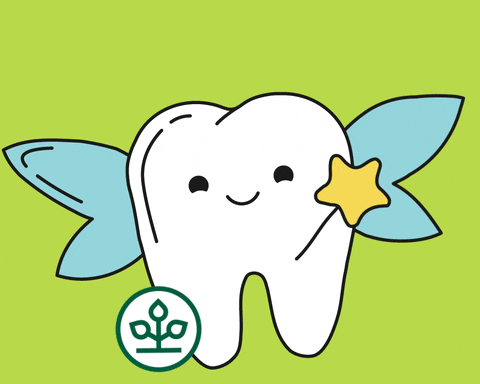
Averting Enamel Damage: Protective Strategies
Dietary Adjustments for Stronger Enamel
Strong enamel is the cornerstone of healthy teeth, and dietary adjustments can play a crucial role in fortifying it, thereby mitigating the risk of erosion. Limiting the intake of acidic beverages such as coffee, tea, carbonated drinks, and fruit juices is essential, as these can weaken the enamel over time. Reducing consumption of sugary foods is also critical, as sugar is a primary contributor to tooth decay, which occurs when bacteria in the mouth metabolize sugar and produce acids that erode enamel.
Moreover, for individuals with acid reflux, avoiding acidic food and drinks is particularly important, as reflux can bring stomach acids into contact with teeth, exacerbating enamel erosion. To neutralize acids after consuming acidic food or drinks, it’s beneficial to rinse the mouth with water and wait at least one hour before brushing to avoid brushing the acids into the enamel surface.
Dental Hygiene Habits to Embrace
Maintaining a solid dental hygiene routine is imperative for protecting your enamel and ensuring long-term oral health. Prioritizing tooth enamel care through daily habits is crucial; this includes gentle brushing with a soft-bristled toothbrush for two minutes, twice a day, and using fluoridated toothpaste designed to harden enamel. Additionally, cleaning between teeth daily with floss or an interdental brush helps prevent plaque buildup that can lead to enamel erosion. It’s important to replace toothbrushes when bristles become frayed to maintain effectiveness.
Regular dental check-ups, at least every six months, allow for early detection and treatment of oral issues, safeguarding against enamel damage. Furthermore, embracing a proper dental care routine is a proactive step toward reducing the risk of tooth decay and ensures the health of your mouth’s first line of defense—your enamel.
Remedying the Ravages: Treatment Options for Enamel Restoration
Professional Interventions for Damaged Enamel
When enamel erosion advances beyond the early stages, professional intervention becomes necessary to protect the teeth and restore function and aesthetics. Here are several treatment options available through your dentist:
Fluoride Treatments: Professional fluoride treatments contain a higher dose of fluoride than the amount available in over-the-counter toothpaste and mouthwashes. These treatments can help to accelerate remineralization and strengthen enamel.
Bonding: For teeth with minor chips, cracks, or discoloration due to enamel erosion, bonding can be an effective treatment. This process involves the application of a tooth-colored resin to the affected areas, which is then hardened with a special light. The resin bonds to the tooth, covering imperfections and providing additional protection.
Veneers: For more extensive damage or for cosmetic improvements, veneers can offer a solution. These thin, custom-made shells of tooth-colored materials (usually porcelain) cover the front surface of teeth to improve their appearance and protect against further wear.
Dental Crowns: In cases where enamel erosion is severe and has led to significant structural damage of a tooth, a dental crown may be recommended. A crown is a cap that covers the damaged tooth, restoring its shape, size, strength, and appearance.
Root Canals: If erosion has led to an infection of the dental pulp — the innermost part of the tooth — a root canal may be necessary. This treatment involves removing the infected or damaged pulp, cleaning and disinfecting the inner tooth, and then filling and sealing it.
These treatments not only restore the strength and appearance of teeth affected by enamel erosion but also provide a protective barrier against future wear. Always consult with your dentist to determine the most appropriate treatment plan for your specific situation.
It’s also important to address the underlying causes of enamel erosion in conjunction with these interventions to ensure lasting results and prevent recurrence. Regular follow-ups and adherence to good oral hygiene practices are critical for maintaining the health and longevity of your restored teeth.

At-Home Care for Enamel Repair
While professional treatments are often required for advanced enamel erosion, at-home care is vital for supporting enamel repair and preventing further damage. Here are some strategies and products that can be used in your daily dental care routine:
Fluoride Toothpaste and Mouthwash: Use fluoride toothpaste and mouthwash daily, as fluoride helps to strengthen enamel by remineralization. Some products are specifically designed to enhance enamel hardness and protect against acid erosion.
Tooth Mousse and Remineralizing Creams: Products like Tooth Mousse contain calcium and phosphate, critical minerals for enamel, and can aid in the remineralization process when applied to the teeth.
Diet Rich in Minerals: Incorporate a diet that supports enamel health, rich in foods with calcium, phosphate, and vitamin D. Examples include dairy products, leafy greens, nuts, and fish. These nutrients are crucial for your body’s natural process of remineralizing teeth.
Avoid or Minimize Acidic Foods and Drinks: To prevent further enamel erosion, reduce the intake of acidic foods and beverages. When you do consume acidic items, try to have them during meals to lessen their impact.
Chew Sugar-Free Gum: Chewing gum that contains xylitol can stimulate saliva production, which not only helps neutralize acids but also delivers necessary minerals to the teeth.
Drinking Water: Sip water throughout the day to help maintain saliva flow, wash away food particles, and neutralize any acids on the teeth.
Avoid Brushing Immediately After Eating: Wait at least 30 minutes after consuming acidic foods or drinks before brushing your teeth, as this can give saliva time to neutralize the acids and prevent the potential brushing away of softened enamel.
Regular Observations: Keep watch for any signs of enamel weakening, such as sensitivity or discoloration, and discuss these with your dentist promptly.
While at-home care is effective for prevention and early stages of enamel erosion, it’s important to note that once enamel is lost, it cannot be regenerated. Nevertheless, these measures can substantially mitigate further loss and enhance oral health. Always consult with your dental professional for personalized advice and recommendations tailored to your specific oral health needs.

Distinguishing Between Enamel Hypoplasia and Erosion
Understanding Enamel Hypoplasia
Enamel hypoplasia is a condition where the enamel of the teeth develops improperly, resulting in less mineralized enamel that can be thin, patchy, or even entirely absent. This defect is not caused by wear and tear but occurs during teeth development – affecting either baby teeth or permanent teeth – and is, therefore, present from the time the tooth erupts.
Causes of Enamel Hypoplasia:
- Genetic factors or inherited conditions
- Prenatal issues, such as maternal diet, smoking, or drug use during pregnancy
- Illness or malnutrition during childhood, affecting tooth development
- Medications or treatments, like chemotherapy, taken at a young age
- Premature birth or low birth weight
Implications of Enamel Hypoplasia:
- Increased risk of cavities due to the thinner protective layer on the teeth
- Heightened tooth sensitivity, especially to temperatures or sweetness
- Aesthetic concerns, as teeth might appear mottled, ridged, or discolored
- Potential challenges in maintaining proper oral hygiene
Treatment Options:
- Application of sealants or bonding agents to protect the tooth surface
- Regular fluoride treatments to strengthen the remaining enamel
- Dental crowns or veneers to protect and restore appearance
- Consistent and precise oral hygiene to manage the heightened risk of tooth decay
Understanding enamel hypoplasia is critical for early detection and management. Effective treatment and preventive strategies can greatly reduce the risk of dental decay and sensitivity associated with this condition. It is essential for individuals with enamel hypoplasia to maintain close communication with their dental professionals to monitor their oral health and promptly address any issues that arise.
How Enamel Erosion Differs from Other Conditions
Enamel erosion differs from other dental conditions in its causes, progression, and treatment options. It’s important to understand these differences, as they guide the diagnosis and management of enamel-related issues.
Enamel Erosion:
- Causes: The primary cause of enamel erosion is acid wear which comes from dietary acids, stomach acid in the case of acid reflux, or acidic substances in the mouth.
- Progression: Erosion typically occurs over time due to the cumulative effect of acid attacks on the enamel, leading to wearing away of the tooth surface.
- Appearance: Eroded enamel often appears as smooth, shiny, and sometimes translucent areas on the teeth. As it progresses, the teeth may become discolored (yellow), reflecting the dentin underneath.
- Sensitivity: Sensitivity often develops gradually as the enamel thins, and more of the dentin is exposed.
- Treatment: Depending on the extent, treatment can include fluoride therapy, dental bonding, veneers, or crowns. Behavior modification, such as diet changes, is also important.
In contrast, conditions such as dental caries (cavities) are primarily caused by the bacterial breakdown of tooth structure due to plaque, and attrition (wear from tooth-to-tooth contact) or abrasion (wear from external friction like brushing) have distinct causes and manifestations compared toacid-induced enamel erosion.
Recognizing how enamel erosion presents and progresses differently from other dental conditions is critical. It allows dental professionals to prescribe the most effective preventive strategies and treatments, which are typically tailored to address the unique characteristics and causal factors of the specific condition.

FAQs on Caring for Your Enamel
Can You Reverse Enamel Erosion?
No, you cannot reverse enamel erosion because tooth enamel, once lost due to physical or chemical damage, is not composed of living cells and cannot regenerate. However, you can take measures to prevent further enamel loss and strengthen weakened enamel by maintaining good oral hygiene, adjusting your diet, and seeking professional dental care. Reducing consumption of acidic and sugary foods, increasing water intake, and waiting to brush your teeth after consuming acidic foods can help protect and maintain your existing enamel.
While the lost enamel cannot be restored to its original form, the emphasis is on prevention, early intervention, and protective treatments to conserve the remaining enamel and ensure the health of the teeth. Regular dental visits for personalized advice and treatments are a vital part of managing enamel health.
What Are Long-Term Solutions to Prevent Enamel Loss?
Long-term solutions to prevent enamel loss focus on consistent and protective oral care habits along with lifestyle adjustments. These include avoiding carbonated drinks and acidic foods to reduce enamel erosion, and using fluoride-infused mouthwash or toothpaste to reinforce enamel strength. Regular dental visits are essential for early detection and intervention of potential enamel issues. Additionally, staying hydrated by drinking water throughout the day can help wash away food particles and acids, while wearing a mouthguard at night can prevent enamel wear due to teeth grinding. Adopting these measures can effectively help maintain and protect tooth enamel over the long term.
By adopting these long-term solutions, you can significantly reduce the risk of enamel loss and ensure that your teeth remain strong and healthy for years to come. It’s crucial to stay informed and proactive about your oral hygiene and to work closely with your dental healthcare provider to tailor a routine that suits your individual needs.
- Comprehensive Guide to Pediatric Dental Care: Expert Tips for Ensuring Optimal Oral Health in Children - February 3, 2025
- Poor Teeth Enamel: Unveil Causes and Treatments for Loss of Enamel or Enamel Hypoplasia - January 12, 2024
- The Best Toothpaste for Bad Breath: Which Toothpaste is the Best for Fresh Breath? - December 6, 2023


